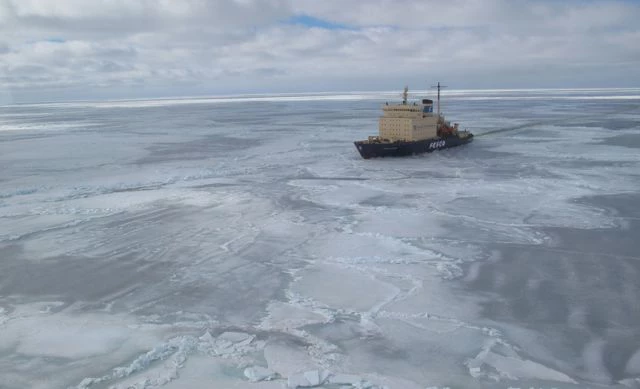Tom Sharpe's Antarctic Diary 2011-12-15
, 15 December 2011
Saturday 19 November
Today began grey, overcast and cold, with light snow falling on the ship. We’ve now been breaking our way through the pack ice of the Ross Sea for three days, picking our way south through whatever open leads or thin ice present themselves.
On the southern horizon, in places, open water shows up as dark reflections on the underside of the cloud - a ‘water sky’. In other places, we see ice blink, where the clouds are brightened by the presence of the sea ice beneath. Our navigation through the pack is aided by satellite positioning; Scott relied upon dead reckoning and the sun to chart his progress.
This afternoon we sighted land for the first time in five days. Away to the west we’ve had our first glimpse of the continent of Antarctica. The faint, white, distant mountains rise to over 3500 metres. Appropriately, one of the first we see, Mount Murchison, is named after a geologist who worked in Wales 180 years ago.
We set course for the mainland, a point called Cape Washington, but the pack ice is too thick, even for our icebreaker. Instead, we’re continuing south, deeper into the Ross Sea, in the hope of breaking out of the pack and into a polynya, which satellite pictures show lies to the south of us.
Sunday 20 November
It’s been slow getting through the pack ice, but we’ve finally made it to Franklin Island, at 76o south.
The ice is thick around the island, but we got within 5 miles of it, so we took the helicopters and landed on the sea ice at the foot of steep black cliffs. From there we hiked about a mile and half south across the ice to a large colony of Emperor penguins at the southeastern end of the island. These are the stars of the movies March of the Penguins and Happy Feet. They walk long distances across the ice to breed, and after the egg is laid it is transferred to the male who then stands on the ice through the severe Antarctic winter holding it on his feet.
The males in the colony huddle together against the cold. The march of the penguins was first observed by Captain Scott on his first expedition. Their chicks are some of the cutest things on the planet and infitinely photogenic. We have a couple of examples of Emperor penguins in our collections in Cardiff, including one presented to us by Lt Teddy Evans of Scott’s last expedition, and that will be in January.
